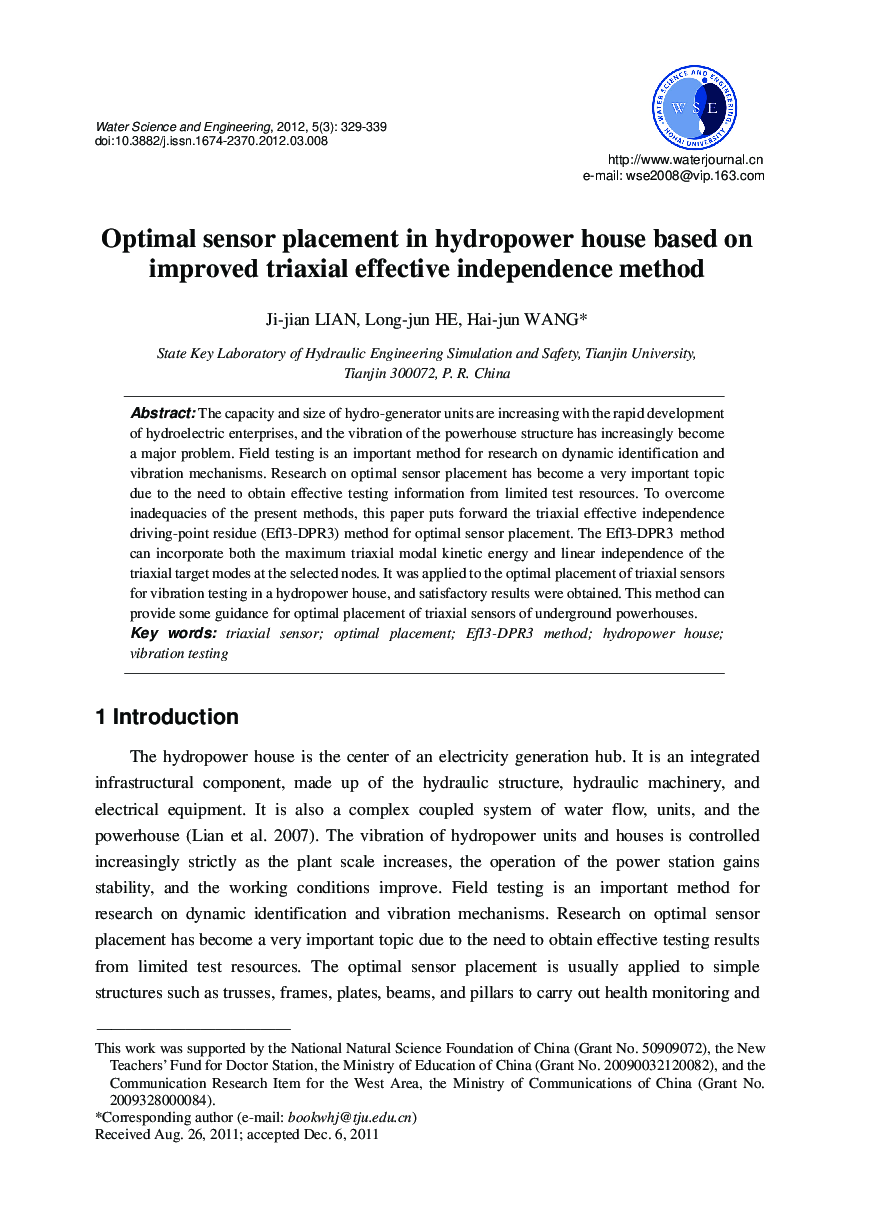| Article ID | Journal | Published Year | Pages | File Type |
|---|---|---|---|---|
| 313123 | Water Science and Engineering | 2012 | 11 Pages |
The capacity and size of hydro-generator units are increasing with the rapid development of hydroelectric enterprises, and the vibration of the powerhouse structure has increasingly become a major problem. Field testing is an important method for research on dynamic identification and vibration mechanisms. Research on optimal sensor placement has become a very important topic due to the need to obtain effective testing information from limited test resources. To overcome inadequacies of the present methods, this paper puts forward the triaxial effective independence driving-point residue (EfI3-DPR3) method for optimal sensor placement. The EfI3-DPR3 method can incorporate both the maximum triaxial modal kinetic energy and linear independence of the triaxial target modes at the selected nodes. It was applied to the optimal placement of triaxial sensors for vibration testing in a hydropower house, and satisfactory results were obtained. This method can provide some guidance for optimal placement of triaxial sensors of underground powerhouses.
